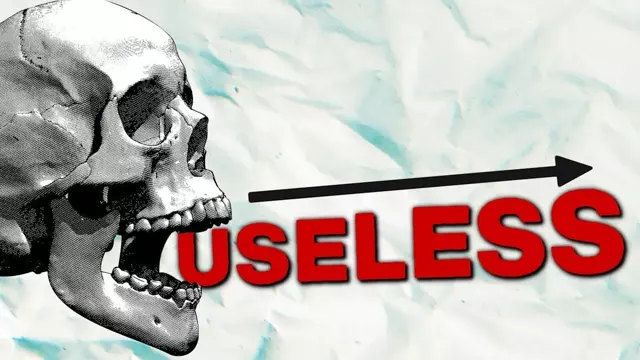2022-11-29
[public] 25.3K views, 24.1K likes, dislikes audio only
4KIf you can’t trust yourself, then who can you trust? Well… everyone and no one. The paradox of self-reporting in all manners of data collection, from basic census information to detailed stats about crime, makes it difficult for us to understand the problems we need to solve. Is it best to design experiments and carefully cull datasets to observe the information we need? Should we rely solely on testimony directly from people involved, and then trust that their answers are correct? Is the right answer a blend of the two?
The truth is that they all have serious problems that lead us down the wrong path for making sense of social behavior. But if they’re all awful, how can it possibly be useful to employ every strategy together?
To understand crime, we need to measure crime. To measure crime, we need to understand people. And all of it relies on a deep knowledge of individuals who employ malevolence, who are victims of flawed and biased systems, or who are just plain wrong in good faith.
In a way, it’s hopeless -- but in the morass of human social behavior, we manage to progress.
*** ADDITIONAL READING ***
“Survey of Prison and Jail Inmates: Background and Method,” Peterson, Chaiken, Ebener, Honig (1982): https://www.rand.org/pubs/notes/N1635.html
“Extent of Unrecorded Juvenile Delinquency: Tentative Conclusions,” Short and Nye (1959): https://scholarlycommons.law.northwestern.edu/jclc/vol49/iss4/2/
“Measurement Error in Self-Reported Health Variables,” Butler, Burkhauser, Mitchell and Pincus (1987): https://www.jstor.org/stable/1935959
“A Comparison of Participant Observation and Survey Data,” Vidich and Shapiro (1955): https://www.jstor.org/stable/2088196
“Bias in Interviewing in Studies of Opinions, Attitudes, and Consumer Wants,” Hart (1948): https://www.jstor.org/stable/3143052
“Deception in Social Research I: Kinds of Deception and the Wrongs They May Involve.” Sieber (1982): https://www.jstor.org/stable/3564511
“Measuring bias in self-reported data,” Rosenman, Tennekoon, Hill (2011): https://www.ncbi.nlm.nih.gov/pmc/articles/PMC4224297/
*** LINKS ***
Vsauce2:
TikTok: https://www.tiktok.com/@vsaucetwo
Twitter: https://twitter.com/VsauceTwo
Facebook: https://www.facebook.com/VsauceTwo
Talk Vsauce2 in The Create Unknown Discord: https://discord.gg/tcu
Vsauce2 on Reddit: https://www.reddit.com/r/vsauce2/
Hosted and Produced by Kevin Lieber
Instagram: https://instagram.com/kevlieber
Twitter: https://twitter.com/kevinlieber
Podcast: https://www.youtube.com/thecreateunknown
Research and Writing by Matthew Tabor
Editing by John Swan
https://www.youtube.com/channel/UCJuSltoYKrAUKnbYO5EMZ2A
Huge Thanks To Paula Lieber
https://www.etsy.com/shop/Craftality
Vsauce's Curiosity Box: https://www.curiositybox.com/
#education #vsauce #crime
/youtube/channel/UCqmugCqELzhIMNYnsjScXXw
/youtube/video/XbPI6vjMtsM

